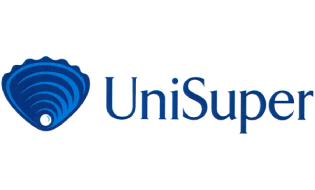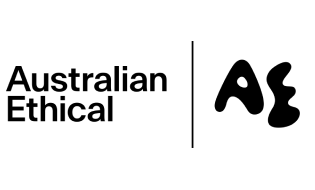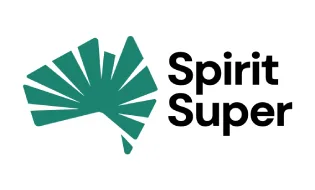




Compare other products
We currently don't have that product, but here are others to consider:
How we picked theseFinder Score for super funds
Finder Score makes comparing superannuation products easier by scoring products out of 10 after assessing their performance, fees and features.
We assess products from over 40 providers based on their risk profile.
The information in this table is based on data provided by SuperRatings Pty Limited ABN 95 100 192 283, a Corporate Authorised Representative (CAR No.1309956) of Lonsec Research Pty Ltd ABN 11 151 658 561, Australian Financial Services Licence No. 421445. In limited instances, where data is not available from SuperRatings for a product, the data is provided directly by the superannuation fund.
*Past performance data and fee data is for the period ending September 2025
Best super funds: Finder's 5 picks
- Best balanced super fund: Hostplus Indexed Balanced
- Best high growth super fund: Aware Super International Shares
- Best value super fund: UniSuper
- Best ethical super fund: Australian Ethical Super Growth
- Best conservative super fund: HESTA Conservative
Best Balanced Super Fund: Hostplus Indexed Balanced
- Hostplus Indexed Balanced was named the best balanced super product in the 2025 Finder Awards.
- It has incredibly low fees of just $139.16 on a $50,000 balance.
- It has achieved strong returns of 11.59% over the past year and 10.11% p.a. over 5 years.
- It has strong exposure to Australian and international shares and is passively managed to keep costs low.
Best high growth super fund: Aware Super International shares
- Aware Super International Shares was named the best high growth super product in the 2025 Finder Awards.
- This product has low fees of just $162 on a $50,000 balance.
- It has achieved high returns of 21.55% over the last year and 15.07% p.a. over the last 5 years.
- This product invests entirely in international shares and is passively managed to keep costs low.
Best value super fund: UniSuper - Sustainable Balanced
- UniSuper was also voted the top value super fund by customers in the Finder Customer Satisfaction Awards 2025.
- UniSuper has some of the lowest fees in the market across all investment options. Its Sustainable Balanced option charges just $326 on a $50,000 balance.
- It has achieved strong returns of 10.21% over the past year and 7.81% p.a. over 5 years.
- It invests in a mix of different assets based on a range of ethical criteria that limits investment in fossil fuel companies, gambling, alcohol and tobacco and weapon manufacturing.
Best ethical super fund: Australian Ethical Super - Growth
- Australian Ethical is one of just a handful of super funds to be certified by the Responsible Investment Association Australasia.
- It excludes all fossil fuel investments and most mining companies, while actively investing in renewable energy.
- It's Growth product has returned 10.45% over the past year and 9.21% p.a. for the last 5 years.
Best conservative super fund: HESTA Conservative
- HESTA Conservative was named the best conservative super product in the 2025 Finder Awards.
- It has a combination of competitive fees and decent returns among all conservative investment options.
- It invests in a range of asset classes, with around 30-40% exposure to growth assets as the remainder invested in defensive assets to protect your balance.
How do we pick the best super funds?

"To most people, the concept of 'best' means the highest-performing by net performance. To calculate net performance, you look at the overall return and deduct fees and expenses. If your fund charges more than others, but is also consistently outperforming its peers by some margin, then you would probably be happy wearing the higher fees. "
What's the best-performing super fund?
Here are the 10 Balanced super funds with the highest 10-year performance returns, as of the latest data at June 2025.
| Fund | 10-year return p.a. |
|---|---|
| Hostplus Balanced | 8.30% |
| Australian Retirement Trust Balanced | 8.20% |
| AustralianSuper Balanced | 7.90% |
| UniSuper Balanced | 7.90% |
| Hostplus Indexed Balanced | 7.80% |
| Cbus Growth | 7.70% |
| Vision Super Balanced Growth | 7.70% |
| HESTA Balanced Growth | 7.60% |
| Aware Super Balanced | 7.60% |
| Equip Super Balanced Growth | 7.40% |
You can see super fund performance for other investment options in our separate guide.
Top 5 super funds for customer satisfaction
The Finder Customer Satisfaction Awards recognises the best performing super fund for customer satisfaction. It's an award that is decided by the only votes that really matter – yours. We asked customers of major super funds to tell us about their experiences. Now we can reveal what they said.
| Provider | Overall satisfaction | Trustworthy/reliable |
|---|---|---|
 | ★★★★★ 4.46/5 | 100% |
 | ★★★★★ 4.46/5 | 94% |
 | ★★★★★ 4.28/5 | 94% |
 | ★★★★★ 4.26/5 | 100% |
 | ★★★★★ 4.15/5 | 91% |
What's the best super fund for my age?
While you're in your 20s, 30s and even 40s you want to have a super fund that charges minimal fees while delivering high returns. While you're young, make sure you're invested in enough growth assets to ensure your balance really benefits from compound growth.
As you get closer to retirement you might want to gradually reduce your exposure to growth assets like shares, so look for a fund that has a more balanced mix.
We've got more tips for managing your super depending on your lifestage:
How to pick the best super fund
Choosing the right super fund is crucial for your financial future. While the top-performing funds are a great start, they may not always align with your specific needs. If you're looking elsewhere, consider these key factors:
- High long-term returns. Look for funds with a consistent track record of strong returns over the long term (funds with 10-year returns above 7% p.a. are among the top performers).
- Low fees. Higher fees can significantly eat into your retirement savings. Opt for funds with lower fees without compromising on performance (aim for annual fees less than 1% of your super balance).
- Investment strategy aligns with your age. Younger investors might prefer high-growth options, whereas those nearing retirement may prioritise stability and have a shorter investing time horizon for a portion of their balance. If needing access to funds in the next 3-5 years, it's important to be invested in a lower risk option.
- Access to insurance cover. Does the fund offers members cost-effective life, TPD and salary continuance policies?

"I only moved to Australia 6 years ago so I'm playing catch up with my super. For me, low fees are important and to know my money isn't being invested in something that's destroying the planet. I also cancelled the life insurance inside my super because the premiums increase every year."
FAQs about picking the best super funds in Australia
Sources
Ask a question
26 Responses
More guides on Finder
-
How to make the most of the $5 trillion wealth transfer
Australian women are set to inherit the majority of the $5 trillion wealth transfer taking place over the next decade. This guide helps women over 45 understand how to manage, protect and grow their inheritance to create financial freedom and a lasting legacy.
-
Compare pension funds that give you an annual income in retirement
Compare pension funds and create a flexible, tax-effective income stream in retirement.
-
How much super should I have?
The average super balance is $154,350. Compare your super balance against the average balance for your age group to see if yours is on track.
-
Worst Super Funds
Here’s a current list of the worst-performing super funds in Australia and steps for how to switch to a better fund.
-
Retirement planning in Australia
Explore essential components of retirement planning for a secure future. Dive into the intricacies of retirement planning, covering vital elements such as investment strategies, savings goals, and risk management. Gain valuable insights to chart your path towards a secure and fulfilling retirement.
-
Ethical super funds in Australia
If you want to make sure your super balance is invested in companies that reflect your values and beliefs, check out this guide to ethical investing.
-
ING Living Super: Performance, features and fees
ING Living Super offers easy online access and a choice of flexible investment options to suit your life stage and retirement goals.
-
Superannuation for sole traders and self-employed
Self-employed super contributions are a great way to boost your retirement savings, but there are some rules. See rules for contributions and compare super funds if you're self employed.
-
Best super funds for under 18s
When you start your first job you'll need to open a bank account, a super fund and understand what your tax obligations are.


As a self employed, am I by law required to have a super fund? At 50, contemplating on starting a superannuation fund, plus paying for a 30 year mortgage, is there a table showing approximately returns on what amount is put in… Are there previous charts on what is put in and what is the outcome after 10/ 20 years?
Hi there,
When you are self-employed there is no legal requirement to pay yourself superannuation. However, there may be some tax advantages of doing so, not to mention the benefit of investment returns.
We’re not licenced to offer personal advice, but this calculator can help you understand how much you might be able to generate through super (in the employer contributions section, enter the percentage that you are considering paying):
https://www.finder.com.au/super-funds/superannuation-calculator
Also, here is some more information about superannuation for self-employed Australians:
https://www.finder.com.au/super-funds/superannuation-for-sole-traders
Hope this helps!
i have a 15 year old who is working. what is the best super fund for teenagers?
Hi Rachel,
We won’t be able to recommend any specific super fund products for your son. However we have written what to look for when selecting a suitable fund here
Thanks
Raj
Hi, I am looking for the best returning super fund taking into account as is stated on your website the fees, how the fund invests your money and if it aligns with your risk appetite which is high growth. The difficulty I am having is comparing high growth as the definition/asset class and the weightings between different super funds can vary so we are not comparing apples to apples. Currently I am with an industry fund and find since they run a lot of ads, fund profits/fees are eaten by the ads so I am looking for other type of funds that are also transparent. Thank you
Hi Navid, Finder is a comparison site and we aren’t licensed to give you any personal advice or product recommendations. You can use our comparison table to compare high growth options, by using the filters on the side: https://www.finder.com.au/super-funds
Hope this helps. Thanks,
Alison
Hi, I’m an international student (my plan is to get a PR eventually), and I am about to start 2 casual jobs; I do not know how to choose which is better for my situation. Could you please assist me with that?
Thank you.
Hi Maria, we aren’t licensed to offer you any personal financial advice or product recommendations. In general when choosing a super fund it’s best to look for a fund that has a combination of low annual fees and a history of high long-term returns. If you’d like some personal recommendations it’d be best to speak to a financial adviser who can give you recommendations for your situation. Thanks, Alison.
If the fees charged by on a Pension account are a percentage of your balance, how do you lose money by having more than one account?
Hi Barb, usually super funds charge a dollar based fee as well as a percentage based fee.